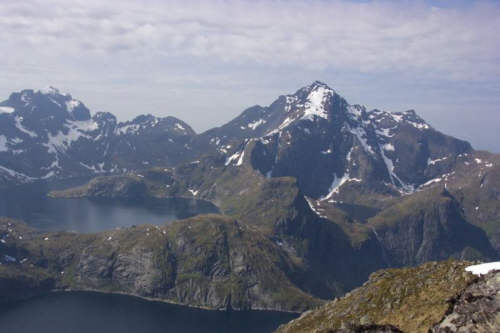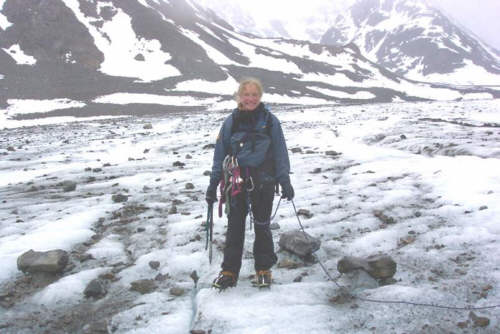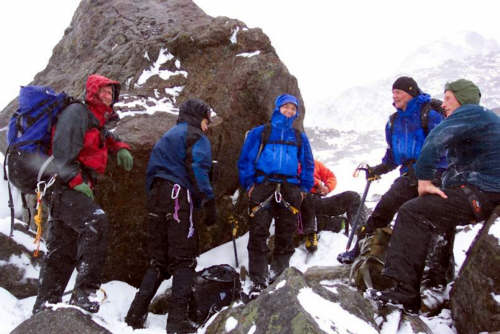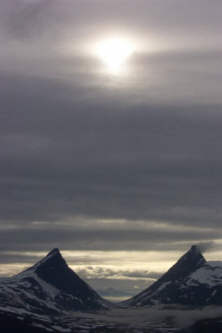Snow-Trekking Expedition ‘Lyngen Dragon 2006’, Norway - June 2006
3(V)MI Bn
After what seemed like 2 days of travel and 3 different flights, it was great for our 3-man party to arrive in Evenes Airport and to be greeted by two friendly Norwegians from the ISTAR Battalion based up in Setermoen. The weather was overcast, but on the 7 hour drive from the airport down towards the Lofoten Islands, of north west Norway, the views just kept getting better. At first I thought it all looked like Scotland, but as we approached the coast, I realised the mountains were a lot more spectacular!
 The highest summit in the Western Loftofen |
The next few days were spent
hiking on the Lofoten islands, experiencing wind, rain, sun and wonderful
views. The main objective was Hermannsdalstind, altitude of 1.029 metres,
the highest mountain in Western Lofoten. This mountain was finally
summited late on in the evening, with a fantastic cloud inversion below
the summit.
On day 5 we headed back up to the mainland and drove on up to Setermoen where the ISTAR Battalion is based. A lunch meeting was held with some of the senior officers of the Battalion, and I learnt a lot about the functioning of the ISTAR organisation. Day six we headed up to Furuflaten in the Lyngen alps. The highest summit here is Jekkevarre, which was to be our main objective. Before we set out on the trip, we met some of the locals and learnt about how the area coped during the Second World War. We were also joined by two Norwegian mountain guides, so that we were now a group of seven climbing the mountain. We stayed the night far up the valley, below the Sydbreen Glacier, in a beautiful wooden chalet constructed by the army. The summit day started at 4 am, the weather looking doubtful. We spent an extra hour trying to cross unusually swollen streams, but our progress was good and the summit looked attainable. Onward and upward we walked. Even above the snow line, progress was good, but sadly the wind became stronger and the breaks in the cloud disappeared. By the time we reached the base of the ridge, 1308m, we decided that the weather was too bad and that we should turn back. We turned around and had a relaxing walk all the way back down to the chalet. All in all, it was a 14 hour walk, with, despite the weather, lovely views. On the final few days of the expedition, we went to see the Blood Road, constructed by prisoners of war in WW2, so the Germans could keep control of Lyngen Fijord. It took 6 months to construct and many people died. Afterwards we headed up to Tromso for a brief bit of R and R. Then on the journey south, we climbed another lower, but quite spectacular rocky peak in the Lyngen area, before heading back to Setermoen. |
 Before we reached the ridge, the weather wasn't too bad |
|
 Decision point - from here we turned back |
 A beautiful view of the evening sun |
On the final night spent in Setermoen we dropped off the hire car and said good bye to our two Norwegian team members, Steiner and Tom. On the following morning we were given a presentation on the ISTAR Bn workings and formation. It seems that they find it hard to recruit and retain soldiers because no one wants to go and live up in the arctic for their posting – 6 months a year with so little light – not everyone’s cup of tea!!
We were then driven to the airport to catch our flight down to Oslo, and time for reflection. The expedition was great fun. Physically quite demanding and I think we helped foster good relations with the Norwegian ISTAR members.